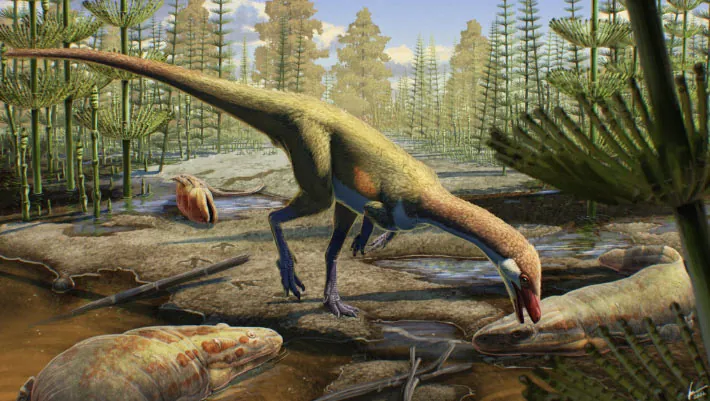
Groundbreaking Fossil Discovery Changes Our Understanding of Dinosaur Origins!
2025-01-08
Author: Wei
Groundbreaking Fossil Discovery Changes Our Understanding of Dinosaur Origins!
Paleontologists in the United States have made a remarkable discovery that could change everything we thought we knew about the evolution of dinosaurs. They unearthed the fossilized remains of a previously unknown species of sauropodomorph dinosaur, now named *Ahvaytum bahndooiveche*. This fascinating creature roamed the northern hemisphere (supercontinent Laurasia) during the Carnian age of the Late Triassic epoch, approximately 230 million years ago.
For decades, the prevailing theory suggested that dinosaurs primarily originated in the southern hemisphere (supercontinent Gondwana), with time gaps of 6 to 10 million years separating the oldest dinosaur species in the north from their southern counterparts. However, the discovery of *Ahvaytum bahndooiveche* reveals that this species existed concurrently with the oldest known southern dinosaurs, challenging established notions of dinosaur development and migration patterns.
Dr. Dave Lovelace from the University of Wisconsin Geology Museum, who led the research, emphasized the significance of this finding. “*Ahvaytum bahndooiveche* lived during a period of immense climatic change known as the Carnian pluvial episode, which has been linked to the early diversification of dinosaurs,” he explained. This episode transformed vast desert landscapes into lush, hospitable environments, paving the way for early dinosaur species to thrive.
Remarkably, *Ahvaytum bahndooiveche* was relatively small, measuring around 1 meter (3 feet) in length, roughly the size of a chicken but with a notably long tail. This revelation contradicts the common perception of dinosaurs as massive creatures, illustrating that their early ancestors were much smaller in scale.
The fossil remains were discovered at a site dubbed Garrett's Surprise in Wyoming in 2013, named after the undergraduate assistant Garrett Johnson who found the locality. This site has yielded not just *Ahvaytum bahndooiveche*, but also bones of a dinosaur-like creature known as silesaurid. This combination of fossils from the Carnian period is a pivotal piece of the puzzle in understanding how dinosaurs spread and evolved.
The presence of a 230-million-year-old, equatorial early sauropodomorph from the northern hemisphere significantly challenges previous hypotheses regarding the timing of dinosaur dispersal from the high-latitude regions of Gondwana. The study concludes that these discoveries showcase a much earlier and widespread distribution of these prehistoric creatures during the Mid-Late Carnian age than previously believed.
This groundbreaking research has been published in the Zoological Journal of the Linnean Society, marking a significant milestone in paleontology. The implications of this discovery could reshape our understanding of dinosaur evolution, from their origins to their eventual dominance on Earth.
Stay tuned as we continue to unravel the mysteries of our planet's past! What other hidden secrets could the fossil record reveal?


 Brasil (PT)
Brasil (PT)
 Canada (EN)
Canada (EN)
 Chile (ES)
Chile (ES)
 Česko (CS)
Česko (CS)
 대한민국 (KO)
대한민국 (KO)
 España (ES)
España (ES)
 France (FR)
France (FR)
 Hong Kong (EN)
Hong Kong (EN)
 Italia (IT)
Italia (IT)
 日本 (JA)
日本 (JA)
 Magyarország (HU)
Magyarország (HU)
 Norge (NO)
Norge (NO)
 Polska (PL)
Polska (PL)
 Schweiz (DE)
Schweiz (DE)
 Singapore (EN)
Singapore (EN)
 Sverige (SV)
Sverige (SV)
 Suomi (FI)
Suomi (FI)
 Türkiye (TR)
Türkiye (TR)
 الإمارات العربية المتحدة (AR)
الإمارات العربية المتحدة (AR)